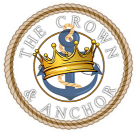.jpeg)
Depreciation measures the value an asset loses over time—directly from ongoing use (through wear and tear) and indirectly from the introduction of new product models (plus factors such as inflation). Writing off only a portion of the cost each year, rather than all at once, also allows businesses to report higher net income in the year of purchase than they would otherwise. You must decrease the value of an asset by the amount of depreciation and increase the balance for accumulated depreciation. The difference between the decrease and the accumulated depreciation is transferred to the income statement.
Ask Any Financial Question
It is not logical for the retailer to report the $70,000 as an expense in the current year and then report $0 expense during the remaining 6 years. However, it is logical to report $10,000 of expense in each of the 7 years that the truck is expected to be used. Assets have economic value that benefit the company over multiple accounting periods.
Recording Straight-Line Depreciation
.jpeg)
It is in this sense that depreciation is considered a normal business expense and, consequently, treated in the books of account in more or less the same way as any other expense. In this example, we can say that the service given by the weighing machine in its first year of life was $200 ($1,000 – $800) to the company. Leasehold properties, patents, and copyrights are examples of such assets. Estimated useful life is the number of years of service the business expects to receive from the asset. Estimated residual value is also known as the salvage value or scrap value.
Is accumulated depreciation a debit or credit?
In the above formula for accumulated depreciation in balance sheet we see that the depreciation value accumulated at the start of the accounting period is added to the depreciation amount of the current financial year. Here it is to be noted that any depreciation that is was existing in the financial statement related to an asset that has been sold off recently, has to be removed. The difference between depreciation expense and accumulated depreciation is that depreciation appears as an expense on the income statement and accumulated depreciation is a contra asset reported on the balance sheet.
If 80 items were produced during the first month of the equipment’s use, the depreciation expense for the month will be $320 (80 items X $4). If in the next month only 10 items are produced by the equipment, only $40 (10 items X $4) of depreciation will be reported. The most common method of depreciation used on a what is the purpose of the accumulated depreciation account company’s financial statements is the straight-line method. When the straight-line method is used each full year’s depreciation expense will be the same amount. The asset’s cost minus its estimated salvage value is known as the asset’s depreciable cost. It is the depreciable cost that is systematically allocated to expense during the asset’s useful life.
Factory machines that are used to produce a clothing company’s main product have attributable revenues and costs. The company assumes an asset life and scrap value to determine attributable depreciation. For example, say Poochie’s Mobile Pet Grooming purchases a new mobile grooming van.
- Understanding its impact on financial statements aids in decision-making, tax planning, and investor relations.
- As business accounts are usually prepared on an annual basis, it is common to calculate depreciation only once at the end of each financial year.
- The popular methods used for the purpose are straight line or diminishing balance.
- However, when it comes to taxable income and the related income tax payments, it is a different story.
- Included are the income statement accounts (revenues, expenses, gains, losses), summary accounts (such as income summary), and a sole proprietor’s drawing account.
- You must decrease the value of an asset by the amount of depreciation and increase the balance for accumulated depreciation.
Debiting Accumulated Depreciation
Accumulated depreciation isn’t usually listed separately on the balance sheet where long-term assets are shown at their carrying value net of accumulated depreciation. This information isn’t available so it can be difficult to analyze the amount of accumulated depreciation attached to a company’s assets. It’s listed as an expense so it should be used whenever an item is calculated for year-end tax purposes or to determine the validity of the item for liquidation purposes. The machine in our example above that was purchased for $500,000 is reported with a value of $300,000 in the third year of ownership.
In our example, the depreciation expense will continue until the amount in Accumulated Depreciation reaches a credit balance of $92,000 (cost of $100,000 minus $8,000 of salvage value). A significant change in the estimated salvage value or estimated useful life will be reported in the current and remaining accounting years of the asset’s useful life. Unlike the account Depreciation Expense, the Accumulated Depreciation account is not closed at the end of each year. Instead, the balance in Accumulated Depreciation is carried forward to the next accounting period.
Although one depreciation account is enough to accommodate the depreciation expense on all fixed assets for the year, a separate provision for the depreciation account must be maintained for each fixed asset account. However, if a company’s depreciable assets are used in a manufacturing process, the depreciation of the manufacturing assets will not be reported directly on the income statement as depreciation expense. Instead, this depreciation will be initially recorded as part of manufacturing overhead, which is then allocated (assigned) to the goods that were manufactured. The combination of an asset account’s debit balance and its related contra asset account’s credit balance is the asset’s book value or carrying value. From an accounting perspective, depreciation is the process of converting fixed assets into expenses. Also, depreciation is the systematic allocation of the cost of noncurrent, nonmonetary, tangible assets (except for land) over their estimated useful life.
